Garden designer Adam Shepherd has created modern versions of the hanging basket: luxuriant living spheres, or living chandeliers, that slowly rotate in the breeze.
He conceived his first plant sphere three years ago. Having created many green walls during his career (the French living wall maestro Patrick Blanc is a major influence), he wanted to create something in 3D. He was wrestling with the conundrum of what to use as a base object, when a move to the coast of South Devon gave him the answer.
After a "lightbulb moment", he started experimenting with marine buoys and fenders. "They are affordable, light, waterproof, have integrated hanging mechanisms and don't disintegrate or deflate." He also works with a local steelworker to create bespoke steel cages.
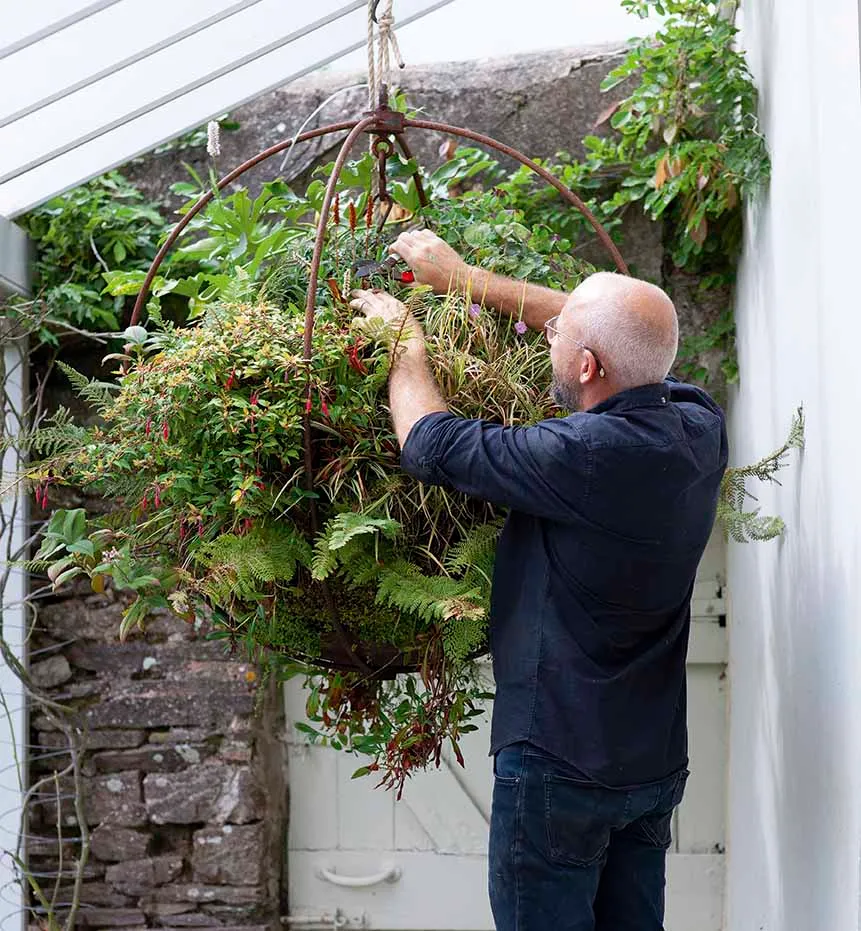
The spheres change with the season and develop over time. Adam uses two layers of a thick capillary matting that has a huge water-holding capacity, secured with stainless steel staples. The two layers support all the plant growth; they quickly 'root in' and colonise the space. Small amounts of additional compost are used only when smaller plug plants form part of the composition.
Adam selects his plants carefully for growth habit, colour and texture. The undersides of the leaves and flowers are also important, as they can be observed from below.
Make your own living garden sphere in five steps
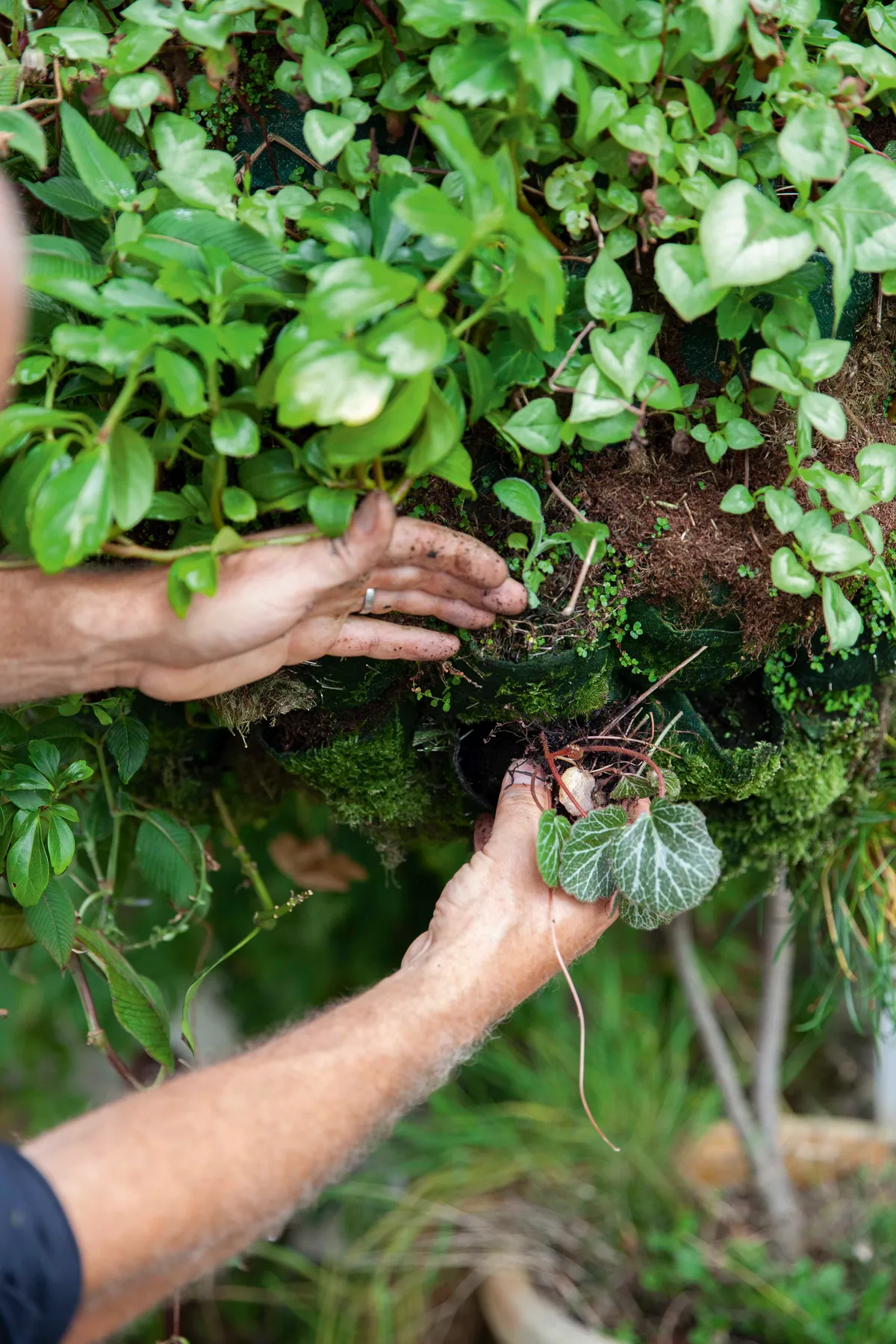
What you’ll need
- A base (a buoy or fender will work well)
- Thick capillary matting
- Stainless steel staples – choose these to avoid rapid rusting
- Secateurs
- Plants: choose one evergreen mat-forming plant as a base and 3-4 ‘stand-out’ plants to dress up your sphere. See inspiration below
Step one
Suspend your sphere at eye level before you begin. Somewhere you can have 360-degree access to your sphere and see the design develop from all angles.
Step two
Closely wrap an initial layer of capillary matting around your base and carefully staple it to itself multiple times so it’s snug and secure.
Step three
Cut strips of matting wide enough to match at least the depth of your deepest plant module, and long enough to wrap around the core several times.
Step four
Attach the matting at one end and start placing your chosen plants between the base layer and the additional strip, stapling around the contours of the plant’s rootball to create pockets as you go.
Tip: You may want to attach a few plants and then cut the fabric, re-angle and continue. Stand back as you work and assess how your planting scheme will develop over time.
Step five
Once your sphere is planted up, you can tweak your design by trimming back any awkward protrusions and running your fingers through congested plants.
Planting ideas and design inspiration
Before you begin, here are three designs to spark some inspiration and get those ideas flowing. Or come up with your own and send photos of your living spheres to hello@gardensillustrated.com or tag us @gardensillustrated on Instagram, Twitter or Facebook.
Moving around
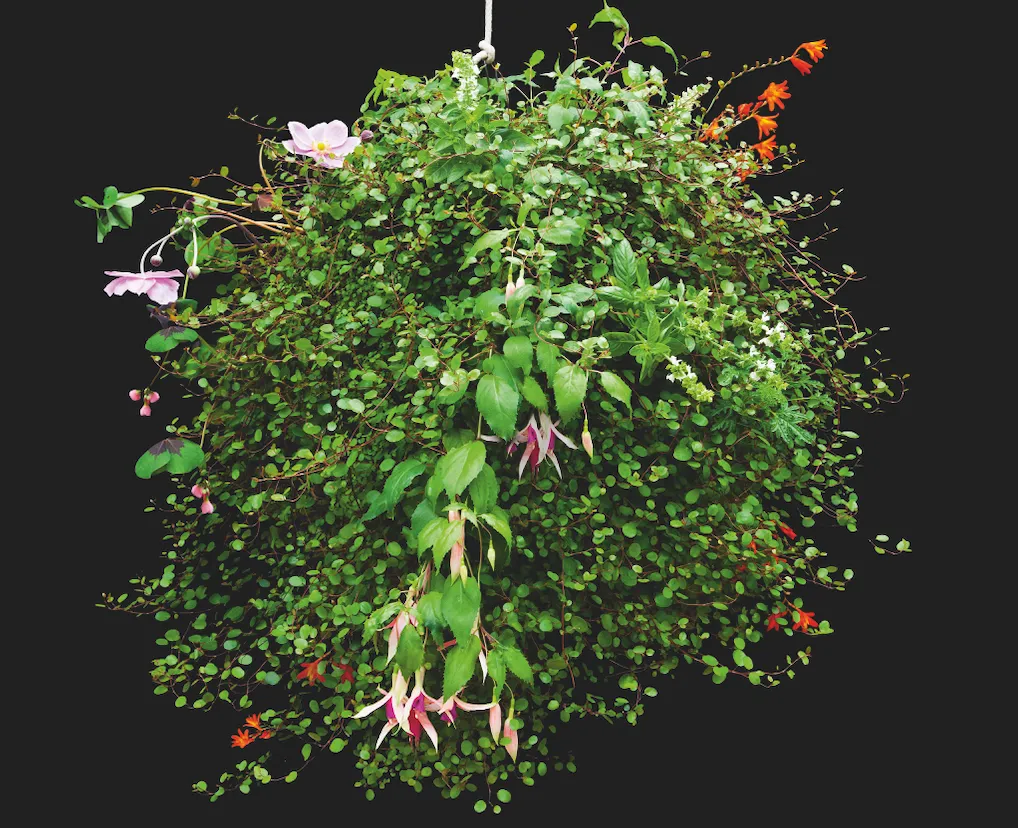
Key plants
- Anemone x hybrida ‘Robustissima’
- Crocosmia x crocosmiiflora
- Fuchsia ‘Susan Travis’
- Muehlenbeckia complexa
- Oxalis tetraphylla ‘Iron Cross’
Wild world
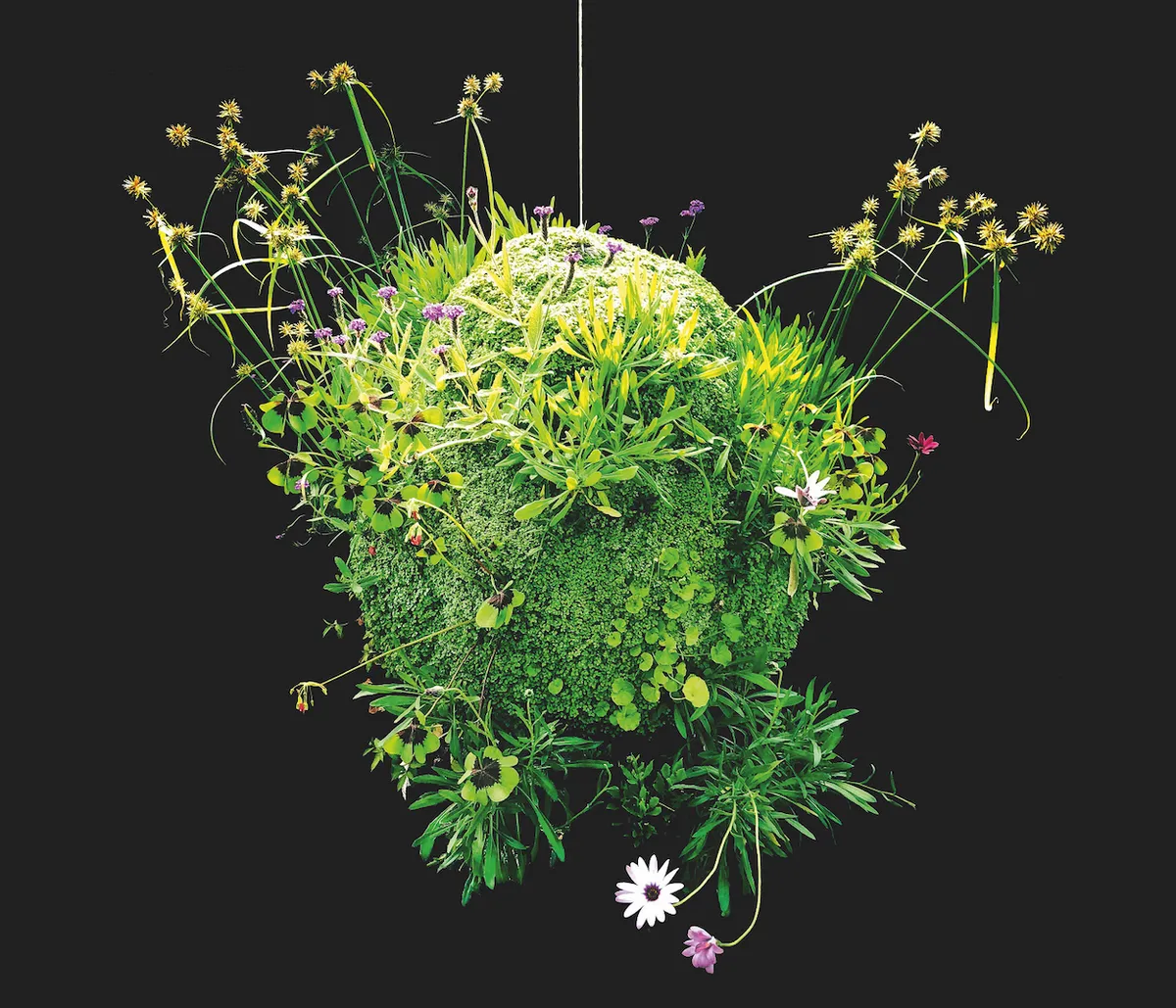
Key plants
- Cyperus rotundus
- Osteospermum jucundum var. compactum
- Osteospermum ‘Soprano White’
- Soleirolia soleirolii
- Verbena rigida
Rush of colour
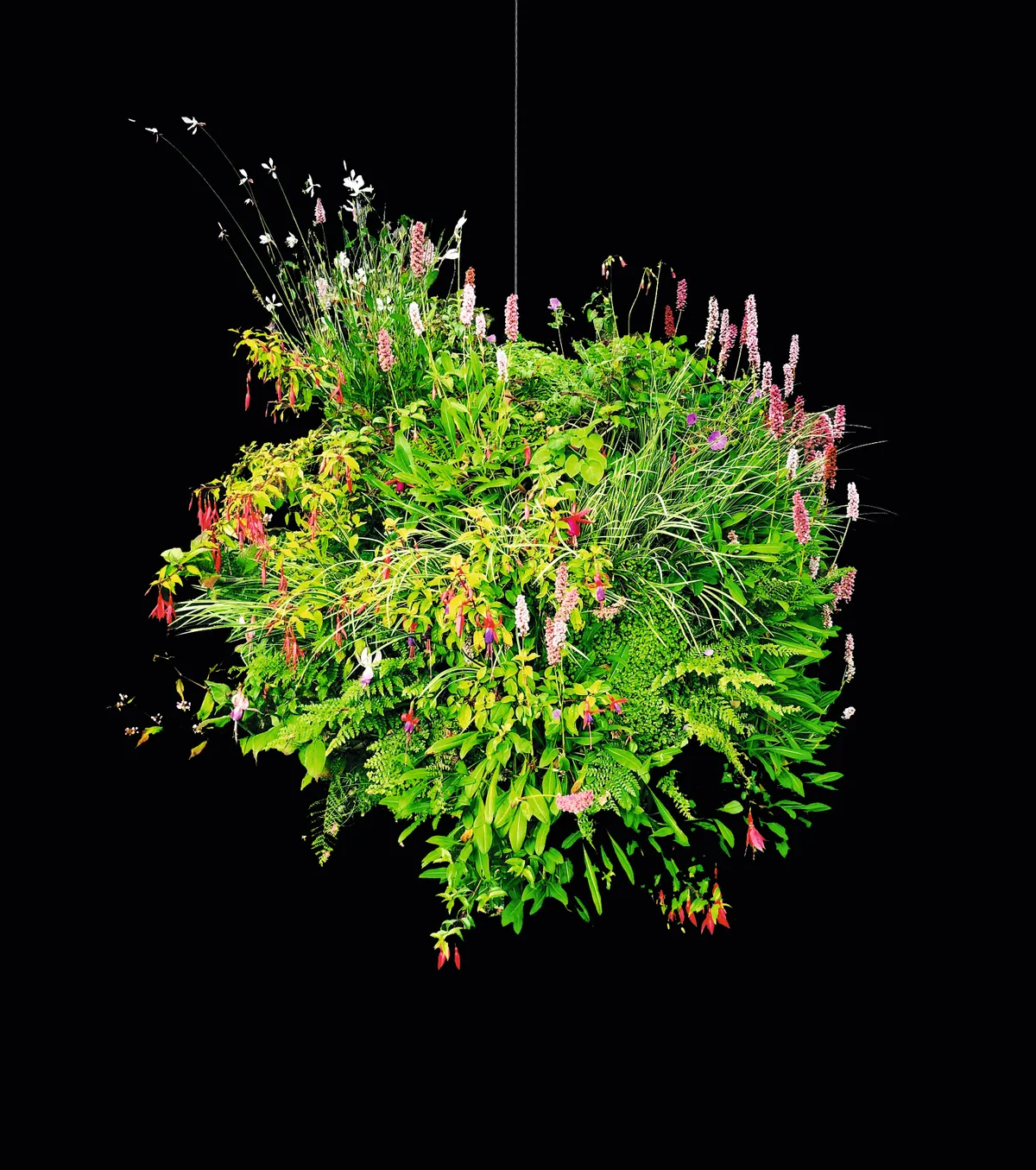
Key plants
- Acourus gramineus ‘Variegatus’
- Fuchsia ‘Genii’
- Persicaria affinis ‘Darjeeling Red’
- Oenothera lindheimeri ‘Whirling Butterflies’
- Polystichum setiferum
Practical considerations
- One joy (and challenge) of these hanging spheres is the constant change of orientation. The sphere should ideally be placed to gently rotate in response to airflow.
- When choosing plants, be aware that the intimate underside of leaves and flowers will be closely observed from below.
- Think where you’ll hang your sphere on completion. Where will the water from your sphere run off to (an area of planting is ideal)? Do you need to think about a drip tray?
Book a sphere planting course
Adam is planning a series of workshops in his beautiful corner of South Devon. You can find out more about Adam’s work and contact him for details of his workshops at tapestryverticalgardens.com.
